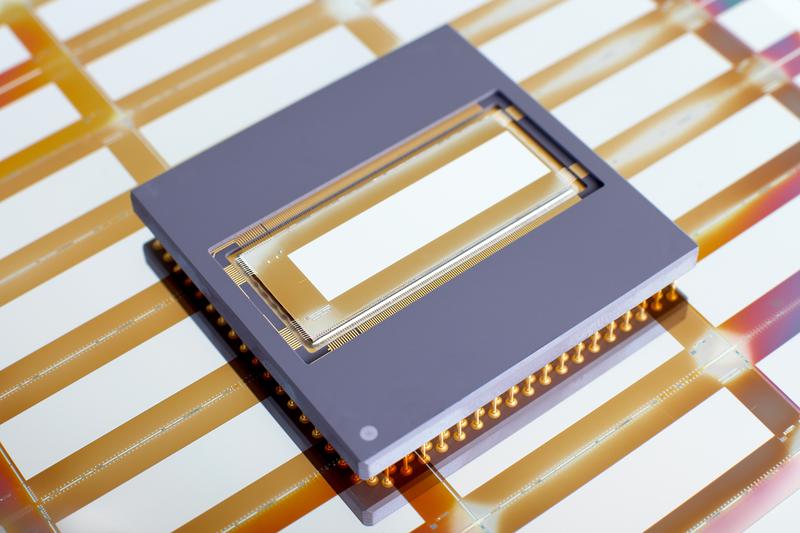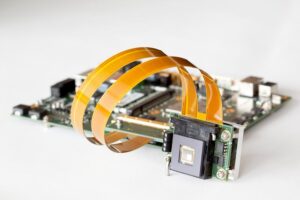
Enhancing Light Control with Optical Microsystems at Fraunhofer IPMS

Mirror array with one million individual mirrors
Sven Döring / ©Fraunhofer IPMS
Optical Microsystems of Fraunhofer IPMS.
Fraunhofer Institute for Photonic Microsystems IPMS uses optical microsystems to enable fast and high-resolution light control. By using small, movable mirrors, the institute’s photonic systems can modulate light to create unique images and structures. The institute’s researchers are implementing 1-axis- and 2-axis tilting mirrors as well as piston mirrors. The mirrors are monolithically integrated on so-called CMOS backplanes.
Fraunhofer IPMS develops spatial light modulators with up to several million mirrors on a semiconductor chip. Depending on the application, the micro mirrors are individually tilted or lowered to create surface patterns, for example to produce defined structures. The spatial light modulators are used in particular in microlithography in the deep ultraviolet range, in PCB production, semiconductor inspection and measurement technology as well as in adaptive optics, astronomy, holography and microscopy. With its developments in this field, Fraunhofer IPMS is a world leader.
A development of Fraunhofer IPMS is a CMOS-integrated micro mirror array with two tilting axes per mirror and a corresponding technology platform. The device consists of 512 x 320 individually addressable mirrors with a pixel size of 48 μm.
The optical principle is based on spatially resolved redistribution of light. This can be used to redirect light beams or to create and control 2D intensity profiles and patterns with variable intensity. Because light is redistributed rather than masked, higher light output is possible. This innovation opens up new possibilities in the semiconductor industry, microscopy, especially for biomedical applications, and laser materials processing (laser ablation, engraving).

© Fraunhofer IPMS
Another SLM technology of Fraunhofer IPMS is a matrix component with about one million micro mirrors with an optically active area of 33 × 8 mm². The matrix can be reprogrammed with a frequency of 2 kHz, whereby each torsional mirror is provided with an individual deflection. Based on this device configuration, application-specific customer requirements can be taken into account for further development. A Customer Evaluation Kit is available for customers to explore new applications. The kit consists of a matrix of 256 x 256 individual mirrors (64k), control electronics and software. A current development at the institute is to implement piston mirrors on the 64k platform.
At LASER World of PHOTONICS in Munich – the world’s leading trade fair for components, systems and applications in photonics – visitors can examine the latest developments of Fraunhofer IPMS from 27 to 30 June. One exhibit is a 2-axis tilting mirror demonstrator. Visitors will also be introduced to the technology of spatial light modulators using macro models.
Appointments for expert talks with IPMS scientists can be made in advance on the Fraunhofer IPMS website https://www.ipms.fraunhofer.de/de/events/2023/Laser.html. The Fraunhofer IPMS booth is located in hall A2, booth #415.
About Fraunhofer IPMS
Fraunhofer IPMS is one of the leading international research and development service providers for electronic and photonic microsystems in the application fields of intelligent industrial solutions and manufacturing, medical technology and health, and mobility. In two state-of-the-art clean rooms and with a total of four development sites in Dresden, Cottbus and Erfurt, the institute develops innovative MEMS components and microelectronic devices on 200 mm and 300 mm wafers.









![[Figure 1] Schematic of next-generation CNT-PANI composite fiber supercapacitor and comparison graph with recent results](https://www.innovations-report.com/wp-content/uploads/2025/05/KIST_leads_next-generation_energy_storage_technolo_1746783279-e1746784635527-362x245.jpg)


